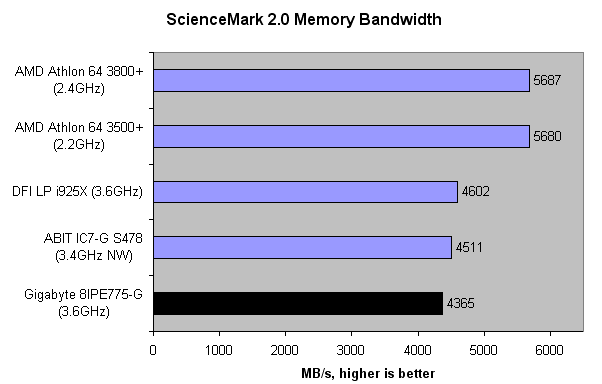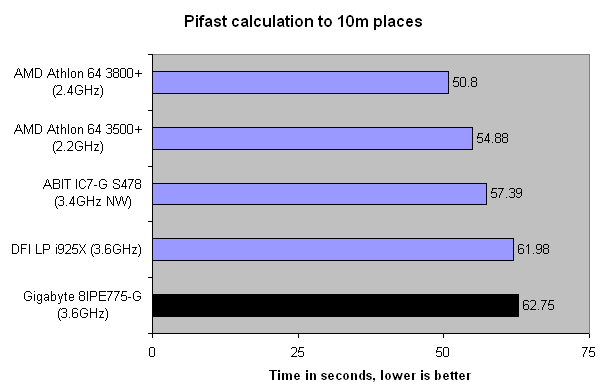|
|
Gigabyte 8IPE775-G 'Springdale' Motherboard
[Abstract]
Final thoughtsAdvertismentGigabyte has tried to create a motherboard that takes the forward-thinking approach of Socket-T and marries it with established Springdale technology. The end result i...
[Content] PCDigitalMobileGame
ScienceMark 2.0 and PifastAdvertisment

Four different, top-end CPUs and chipsets should highlight just where Gigabyte's 8IPE667-G stands in relation to the competition. We'll start off by looking at board bandwidth and latency.

Firstly, all motherboard use a dual-channel architecture and, barring the i925X DFI LANPARTY that utilises DDR2 533MHz RAM, use DDR1 memory at DDR400 speeds. So, according to ScienceMark 2.0's findings, the Gigabyte board is none too hot here. A comparison S478 Canterwood board produces more bandwidth and the opposition, in the form of a couple of Athlon 64s on a VIA K8T800 Pro, produce a whole lot more.

Latency was always going to be an AMD forte, really. I'm somewhat surprised and perplexed by the results obtained from the 8IPE775-G board when used in conjunction with low-latency (2-2-2-5) DDR1 memory. Running the test again with generic memory with 2.5-4-4-8 timings showed no difference in reported ns latency. I'd be inclined to disregard this result and concentrate on real-world findings.

Pifast also shows the Gigabyte board as the slowest of the bunch. No PAT optimisations and DDR400 memory put it at a disadvantage when compared directly to an Alderwood board. Still, I reckon the 1-second sacrifice is more than worth it in value terms.
|
|
|

